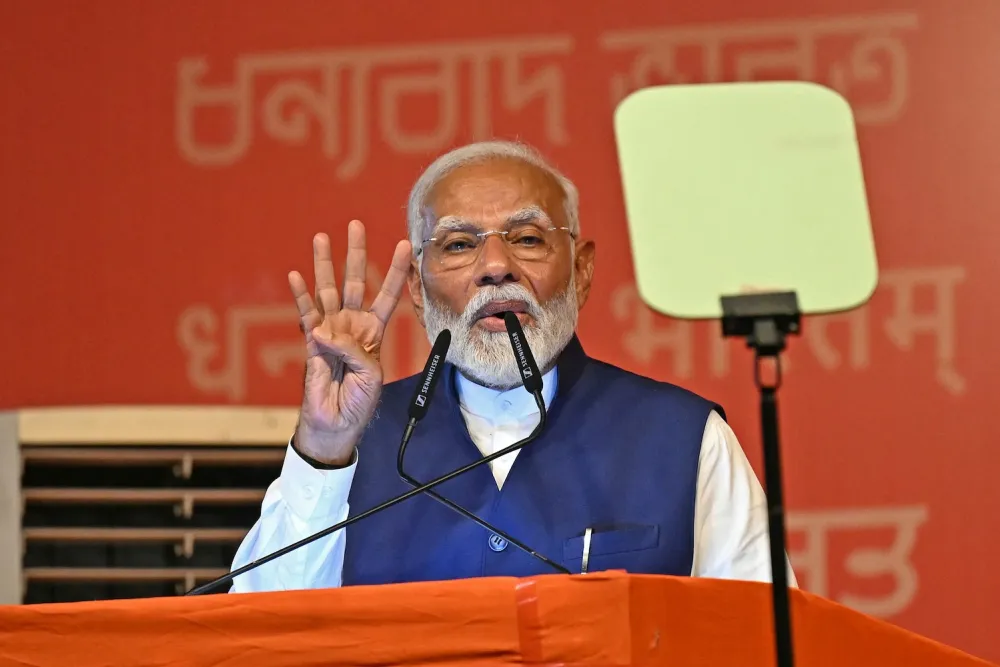
作者/Author(s): Bhaskar Chakravorti
網站來源/Source: Foreign Policy
日期/Date: 09/16/2025
關鍵字/Keywords: 制裁、經濟、莫迪、俄羅斯、石油
摘要:
川普的關稅戰引發受害國截然不同的反應:歐盟大多屈服於壓力,中國在稀土領域發現槓桿優勢,巴西與印度則保持立場不變。其中川普因為印度持續購買俄羅斯石油,宣布美國自 8 月 27 日起對印度製商品徵收 50% 關稅。雖然缺乏談判籌碼,印度仍維持與中俄兩國的友好關係。莫迪拒絕與川普對話或放棄俄羅斯石油以減輕關稅壓力,同時鼓勵民眾多多購買國產商品,並計畫降低商品及服務稅,彰顯印度成熟務實的外交政策取向。然而,真正的務實者會權衡評估,斷交普丁的實際代價跟斷交川普的代價孰輕孰重。
- 若印度轉向放棄俄羅斯石油與武器,每年將付出約 4.2 兆美元的代價,相當於印度GDP 的 0.2% 至 0.3%。若美國將印度產品關稅降至25%,就可以協助印度減輕脫離俄羅斯的成本,甚至創造貿易順差。反之,若莫迪持續無視川普的要求,印度將付出相當於自身GDP 0.3%至0.6%的代價。兩種選項的經濟差距不大,導致莫迪陷入更深層的兩難。
- 莫迪或許會繼續依賴更可預測的普丁,因為川普完全不在意印度,而美國對印度徵收高關稅對本身的地緣政治與經濟也沒有意義。然而,還有其他必須考量的因素:
- 莫迪的決策必須符合國內需求與政治發展。一旦對川普的憤怒消退,印度必須直面製造業衰退的嚴峻現實,這可能引發失業危機,並間接提高印度不與美國合作的代價。
- 印度需要外資與技術轉移來推動產業發展與數位轉型,而美國是最可能的源頭。
- 印度與美國在遏制中國方面享有共同的地緣政治利益,印度也需要美國的支持來嚇阻巴基斯坦。
- 雖然印度早已推動出口市場多元化,但要找到能代替美國市場的選項並不容易。
- 在這種情況下,印度必須重新定義與川普的關係,在確保國內外政治認同時,逐步減少對俄羅斯的依賴。
Summary:
Trump's tariff war elicited mixed responses from its victims: the EU has mostly succumbed to pressure, while China has discovered leverage in the rare-earth sector, and Brazil and India have remained steadfast. However, Trump imposed a 50% tariff on Indian-made goods from August 27 onwards, as a consequence of India's continued purchase of oil from Russia. Despite lacking leverage, India maintains friendships with Russia and China. Modi still refuses to talk to Trump or abandon Russian oil to alleviate the tariffs, but has encouraged locals to buy more domestic products and plans to lower the GST, signaling India's mature and pragmatic foreign policy approach. Nevertheless, a real pragmatist will evaluate and compare the actual costs of not doing business with Russia vs the costs of not doing business with Trump.
- A pivot away from Russian oil and weapons will cost India around $4.2 trillion annually, which is approximately 0.2% to 0.3% of India's GDP. If the US reduced the tariff on Indian products to 25%, it could help India to alleviate the costs of shifting away from Russia and even earn a trade surplus. On the other hand, ignoring Trump's request will cost India approximately 0.3% to 0.6% of its GDP. In short, both options are similar in economic terms, putting Modi in a more profound dilemma.
- Modi may continue to rely on a more predictable Putin, as Trump may not care at all about India, given that tariffing India makes little geopolitical or economic sense for the US. However, there are other considerations:
- Modi's guiding priorities must align with domestic needs and the country's political agenda. Once the anger towards Trump subsides, India must confront the harsh realities of its manufacturing industry's downturn, which could lead to an unemployment crisis and indirectly increase the cost of not doing business with the US.
- India also needs foreign investment and technology transfer to boost its industries and facilitate digital transformation, with the US being the most likely source.
- India and the US share mutual geopolitical interests in checking China. India also needs the US support to deter Pakistan.
- Although India had embarked on a journey to diversify its exports, it isn't easy to find a substitute for the US market.
- Given the circumstances, India must redefine its relations with Trump in a manner that is both politically satisfactory at home and abroad, while gradually pivoting away from Russia.
